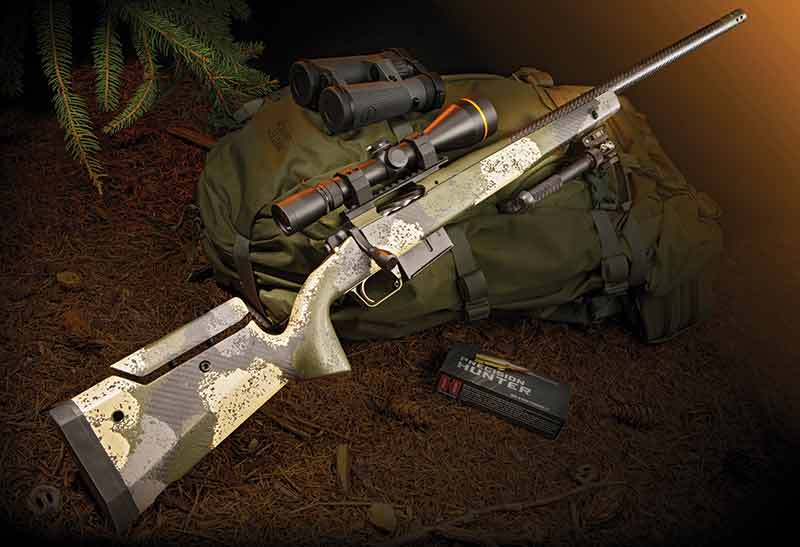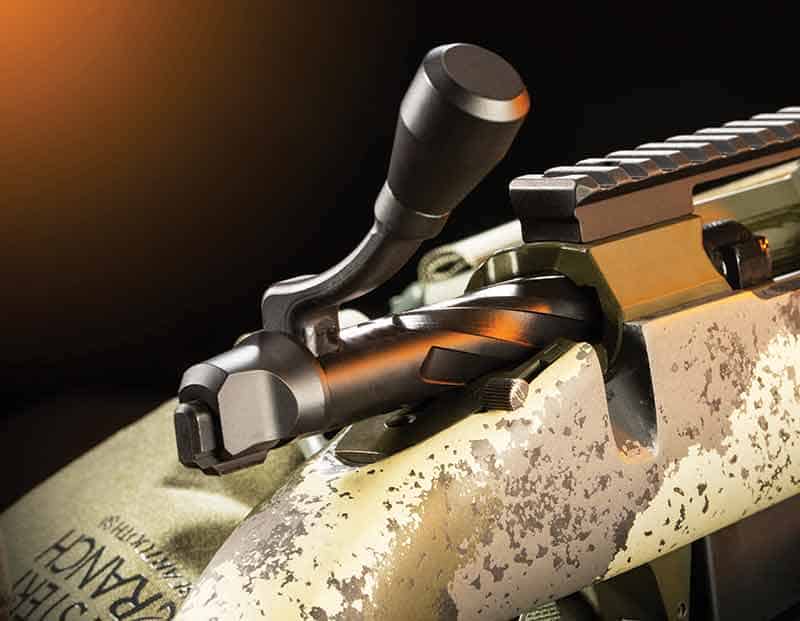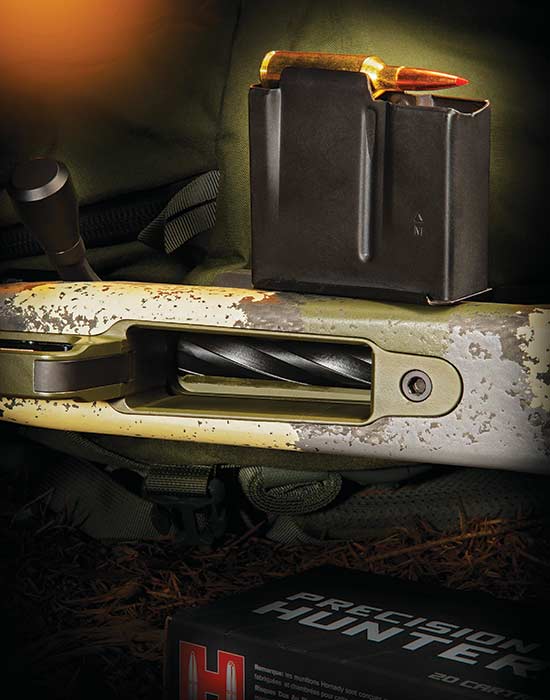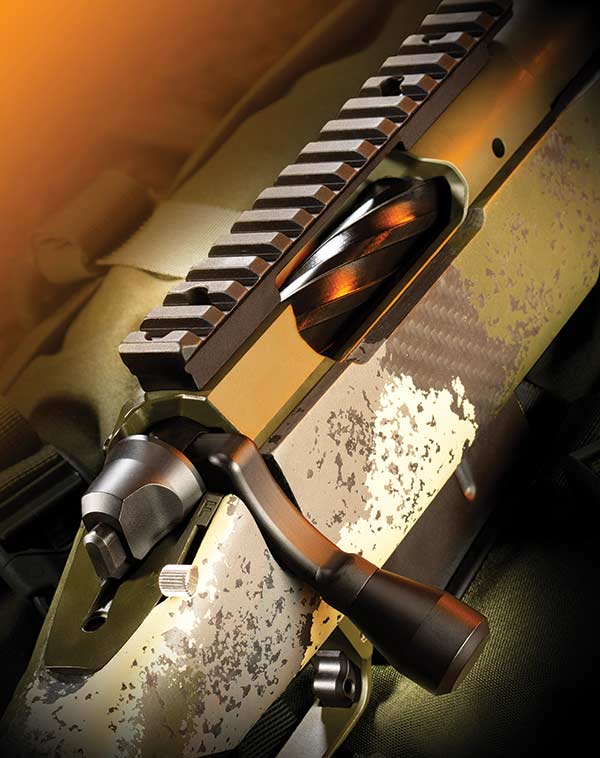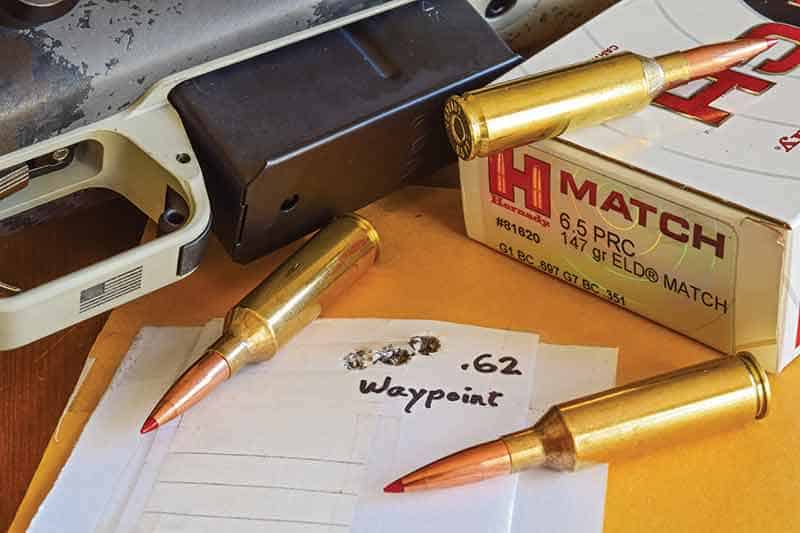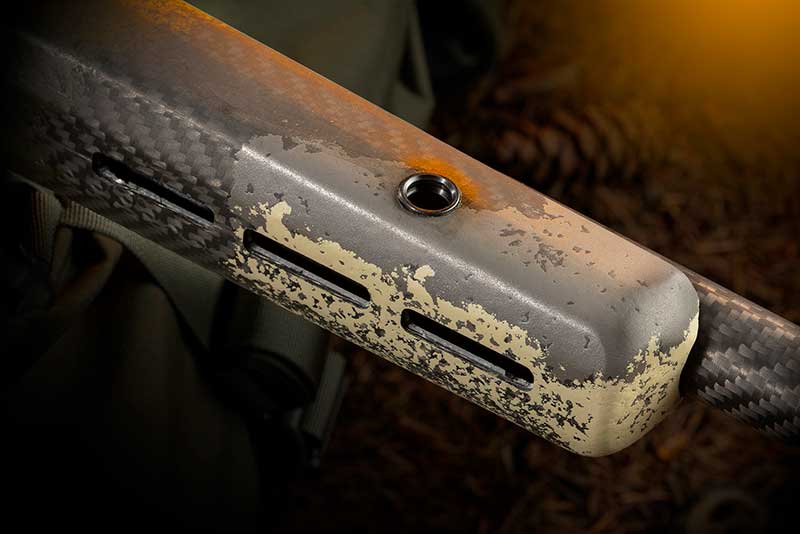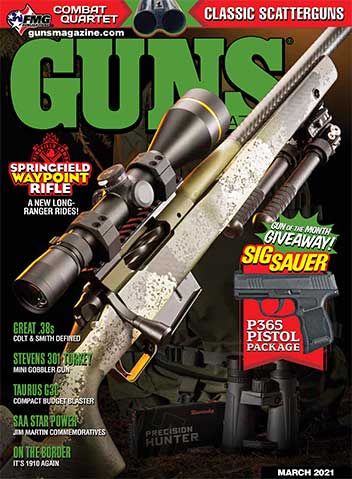Springfield Armory
Waypoint Rifle
Historic Name Moves Back To Bolts!
Planet Earth doesn’t need another bolt rifle. But, when the east wind brought scent of this one, I had to look twice at its origin — Springfield Armory. The name is as old as our Republic, as current as new SAINT self-loaders. But not since 1903 had the name been pinned on a bolt-action. What was this new Waypoint?
Backstory
Tapping out the Springfield name brought me to the confluence of the Connecticut and Westfield Rivers in Massachusetts. There, early in 1777, George Washington established for his Continental Army a repository for muskets and a storage facility for powder and ball. By 1795 it had grown to include a foundry and “water shops” edging the Mill River dam powering the manufacturing tools. Springfield was the first federal armory and produced our first U.S. musket, the Model 1795. A century later it would turn out the Krag-Jorgensen rifle. The 1903 Springfield followed, and, on the heels of the Depression, the Garand. A 1968 budgeting decision by Secretary of Defense Robert McNamara shuttered the Armory. It would become a National Historic Site in October, 1974.
Quick to spot value in the storied Springfield Armory name, Elmer Balance snared it immediately to re-brand his L.H. Gun Company, then building a civilian version of the M14 rifle. Designed in 1954 and adopted as a U.S. service arm five years later, the M14 remained in production until 1980, well after adoption of the M16. Roughly 1.3 million were shipped. In 1974, six years after L.H. Gun Co. took the Springfield label, Balance peddled his Texas business to Robert Reese in Geneseo, Illinois. Since then, the Reese family has continued to produce the Springfield Armory M1A, and has added new versions of it. Handguns followed, from a 1911 series to the polymer-frame XD and compact Hellcat. The AR-15-based SAINT rifle arrived a couple of years ago. Under CEO Dennis Reese (Robert’s son), the company has grown as a manufacturer and purveyor of reliable self-loaders.
History Repeats
The Model 2020 Waypoint fills a gaping hole in its offerings as it plunges the company into the competitive field of hunting/match rifles. Those of us who recall column-shift automobiles, black-and-white episodes of Lassie and lament the march of figured walnut toward extinction can be forgiven the instinctive pause over Waypoint’s hand-laid carbon fiber stock. A steep grip and tall comb, reinforced M-Lok slots in the forend and five QD swivel cavities reflect contemporary tastes and priorities.
On the other hand, even traditionalists approve light weight. Waypoint’s AG Composites stock scales an ounce shy of 2 lbs. with a standard comb, 2 lbs. 11 oz. with an adjustable cheek-rest. Cataloged in Ridgeline and Evergreen Camo finishes, it is pillar bedded and wears a black 1″ Pachmayr Decelerator pad.
Action And Bolt
The action, produced stateside, has a Remington 700 footprint. Departing from the washer-style 700 recoil lug, Springfield Armory gave Waypoint a lug integral with the receiver ring. Four 6-48 screws and two recoil pins secure a supplied Picatinny top rail. Receiver, bottom metal, barrel shank and muzzle brake are Cerakoted.
The twin-lug, spiral-fluted bolt glides in races cut in the stainless receiver by an electrical discharge machine. To ensure dimensions of the steel hew to close tolerances, bolt and receiver are finish-machined after heat-treating. The bolt is Nitride-coated to make its surface hard and slick. Dual cocking cams add a nudge to its already-easy 90-degree lift.
You won’t need tools to disassemble this bolt. The shank is long enough for easy manipulation without bumping your knuckles or hanging up in gun cases. Its ample, cylindrical bolt knob is removable. The left-side bolt release is unobtrusive, perfectly inletted. It pivots silkily.
Trigger
Waypoint accommodates after-market triggers for the 700. But the TriggerTech trigger installed is a dandy, outside-adjustable from 2½ to 5 lbs. Its “free-floating roller” smooths take-up and break. The Remington-style two-position safety blocks the trigger only. Springfield trimmed lock time to a sliver of a blink — 1.9-milliseconds — putting bullets in the air as soon the trigger trips. Springfield’s claim: “Up to 45% faster than the competition.”
Engineers settled on a detachable AICS-pattern, single-stack magazine for centerline feeding. An unobtrusive latch inside the trigger guard holds it snugly, but yields readily when you must re-load now. Chambered in 6mm Creedmoor, 6.5 Creedmoor, 6.5 PRC (Precision Rifle Cartridge) and .308, Waypoint comes with button-rifled BSF carbon fiber barrels as well as fluted stainless. All are floated and threaded 5/8-24 for the included radial brake.
Twist rates are one turn in 7½” for the 6mm Creedmoor, one in eight for the 6.5s, one in 10 for the .308. These brisk spins excel in accuracy trials with the leggy, ballistically efficient bullets so popular now.
Each BSF barrel is “jacketed in a roll-wrapped carbon fiber sleeve and loaded under tension so 95% of the sleeve doesn’t contact the barrel, providing cooling air gaps and promoting cold bore to warm bore repeatability.” Fluting under the sleeve trims weight, increases area for surface cooling.
Handling
A couple of weeks before Springfield Armory announced its new rifle, I wheedled one of the first Waypoints from Geneseo. Its 24″ carbon fiber barrel in 6.5 PRC, and the standard stock in Ridgeline finish fit my request exactly. A 2.5-10×45 Leupold on the rail brought the 6½-lb. naked weight to an even 8 lbs. My Timney gauge registered trigger break at a clean 3¾ lbs.
This rifle balances well. The vertical grip feels good at the bench, prone and standing. It’s long enough for my skillet-size hand, with a deep dip to comb for comfy palm placement. It has a useful palm-swell, a gentle flare below to keep my hand from slipping off. From prone and sitting, it puts my firing finger too far forward, a common failing with stocks designed for the 95% of shooters with paws of normal dimensions.
No, Waypoint’s stock isn’t as lively as a 1952 Mannlicher-Schoenauer carbine’s, or a Model 94 Winchester’s. But as I pre-date promises of free college, health care and prosperity, Mama’s reminder “you can’t have everything” still resonates. If stocks with steep, ample grips cradled easily and leaped to cheek, we’d see them on British 20-bores. If broom-stick wrists and sliver fore-stocks put more bullets in the middle, they’d grace Olympic position rifles.
Waypoint’s comb is just high enough to align my eye quickly with the Leupold’s axis. It would be perfect behind slightly lower rings. The available height-adjustable comb will accommodate any glass. While M-Loks and QD swivel pockets reflect market trends, traditional QD studs fore and aft would be helpful, to add a Harris bipod or borrow a sling from another rifle so equipped. The forend has a pleasing profile. It bellies nicely to a rest and favors open-hand and thumb-and-fingers support standing. Gradually losing width and gaining a more rounded cross-section as it tapers forward, it rests nicely in my palm in field-shooting positions. I like its generous length: 12¾” from the front guard screw. The stock is well inletted around receiver and bottom metal, which stands slightly proud. The channel lets the barrel float, but the gap either side won’t swallow loose ammunition.
Neither velvety nor rough, the stock’s surface qualifies as smooth, with subtle texture. I like the Ridgeline Camo, an open patch-work of cream and brown and shades of gray, with dark freckling.
Range Time
Bore-sighting at the range, I found Waypoint’s bolt shank drops the smooth knob in just the right place for fast cycling. At cock, the striker protrudes 3/8″ from the trim shroud. Bolt travel is piston-slick, with essentially no rattle and very little end play at full retraction. Running this rifle is fun! It slurps cartridges from the box without so much as a hiccup. The magazine is a cinch to seat and release. You can induce a slight wiggle with it inserted, but it remains silent during normal handling.
The extractor, inserted through a slot in the center of the right-hand (lower) locking lug, is stouter than it looks. Beefy shoulders secure it and resist breakage should you get too ambitious with handloads and stick a case. The claw is 0.24″ wide across most of its face, 0.20″ at its leading edge. A gentle face angle makes for easy push-feed engagement. Waypoint’s peppy plunger ejector kicks from 4 o’clock.
My first bullet, at 35 steps, struck near center. I adjusted the scope, moved the target to 100 yards.
The barrel-diameter brake, Cerakoted to match the action, tamed recoil from Hornady’s 6.5 PRC Match loads to a mere bump. The Decelerator pad added its cushion. I had used this ammunition in other rifles. The 147-grain ELD Match bullets, sent at 2,910 fps, had delivered exceptional accuracy, making it a perfect load to test Springfield Armory’s .75 MOA Waypoint guarantee!
Accuracy
Over my Caldwell bag, I pressed the trigger as if to nurse the bullet downrange. The next two hit very close, punching a 0.62″ row, cheek to jowl. Three more groups mic’ed 0.63″, 0.70″ and 0.82″. (A pulled shot on the last series spoiled a pair nipping an oblong hole.) Average of four groups: 0.69″, comfortably under the 0.75″ bar. Superimposing targets later, I found only my flier had kept 12 shots from chewing a 1-MOA crater. Such consistent accuracy from a rifle that, stripped, scales under 6¾ lbs. cheers the soul.
Carbon fiber-stocked, carbon fiber-barreled bolt rifles with Remington footprints are popping up like dandelions these days. Factory-produced renditions show their pedestrian pedigree in forgettable fit and finish, even before you put them on bags. The tariffs of custom rifles with superior components and workmanship can test your marriage.
Springfield Armory’s Waypoint Model 2020 is notable for its value — no-compromises materials and assembly, no-apologies looks, feel and function, with accuracy you can put up against much costlier hardware. Starting price: under $1,700. Cycle the bolt, thumb the safety, dry-fire the trigger. Just hold Waypoint on target. You know you’ve something special in hand.
With the versatility we once expected from rifles of much different form, Springfield Armory’s first bolt rifle in a century should impress hunters as well as shooters doping wind and grabbing clicks in long-range competition, and those just banging steel at four-figure yardage.
